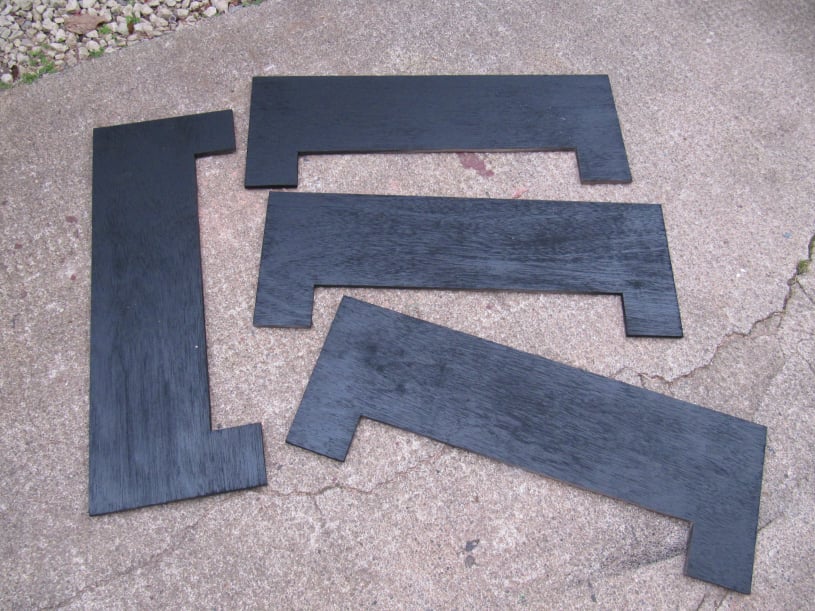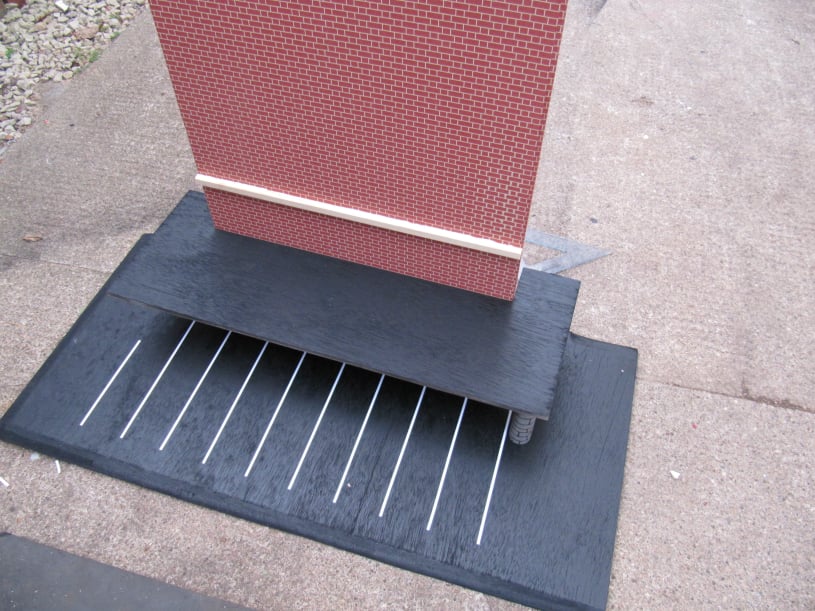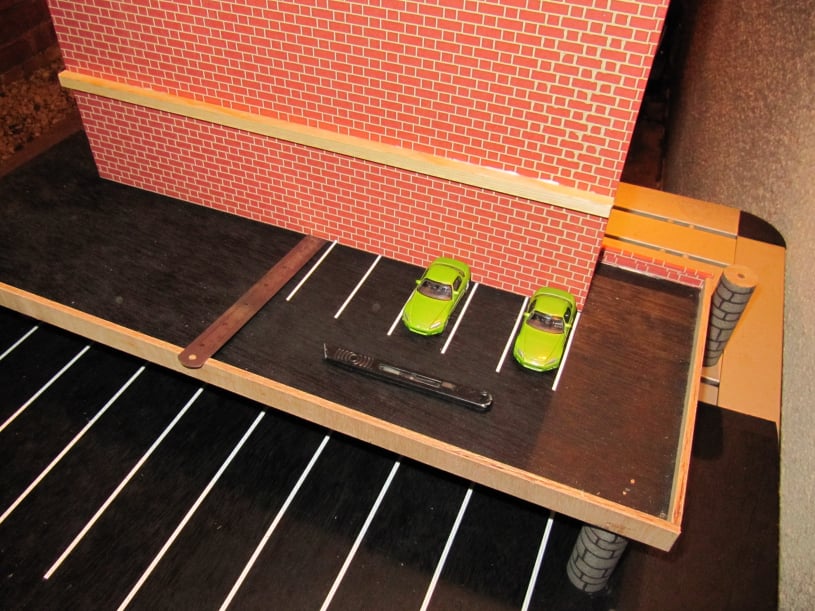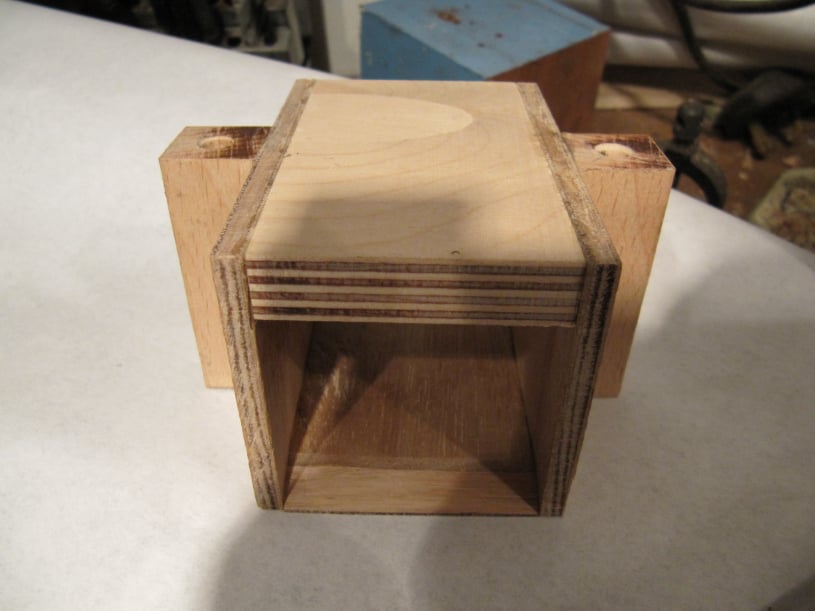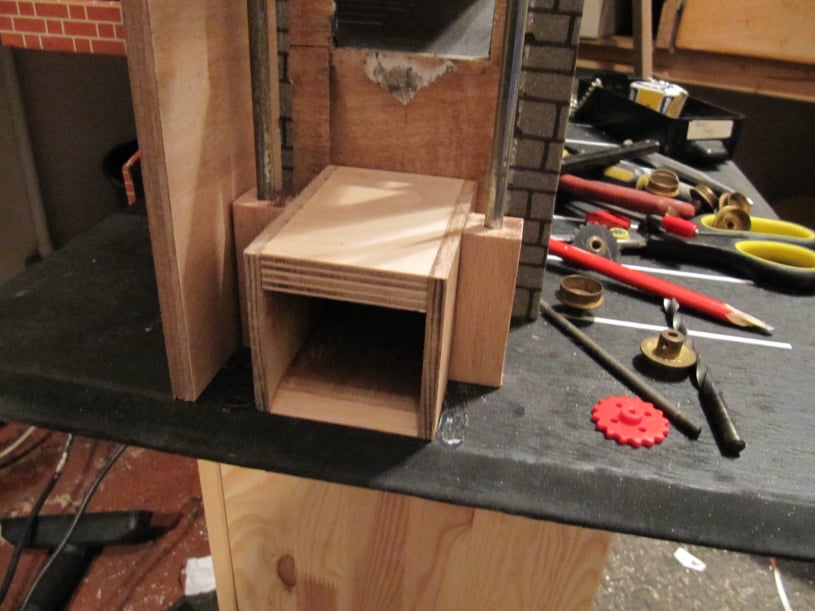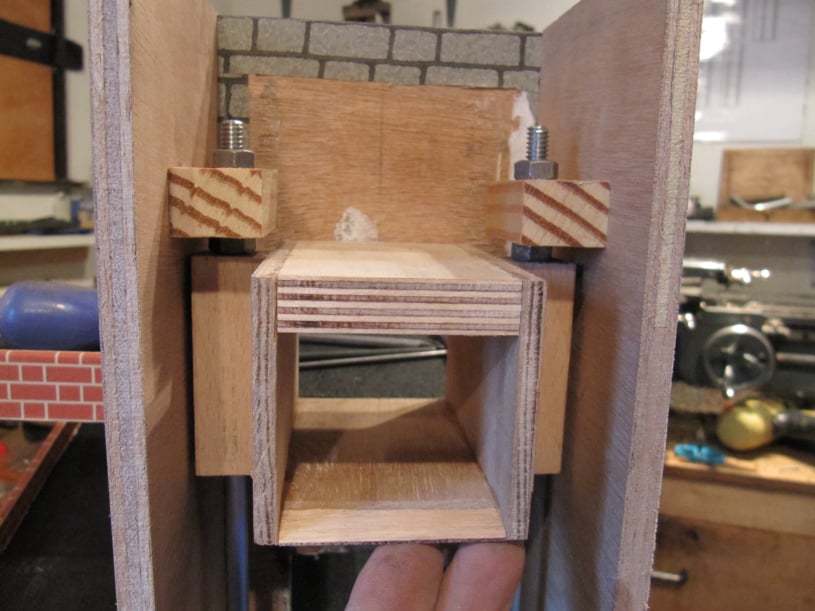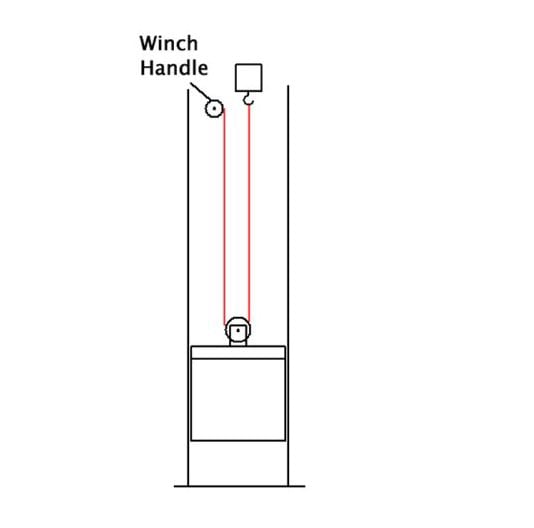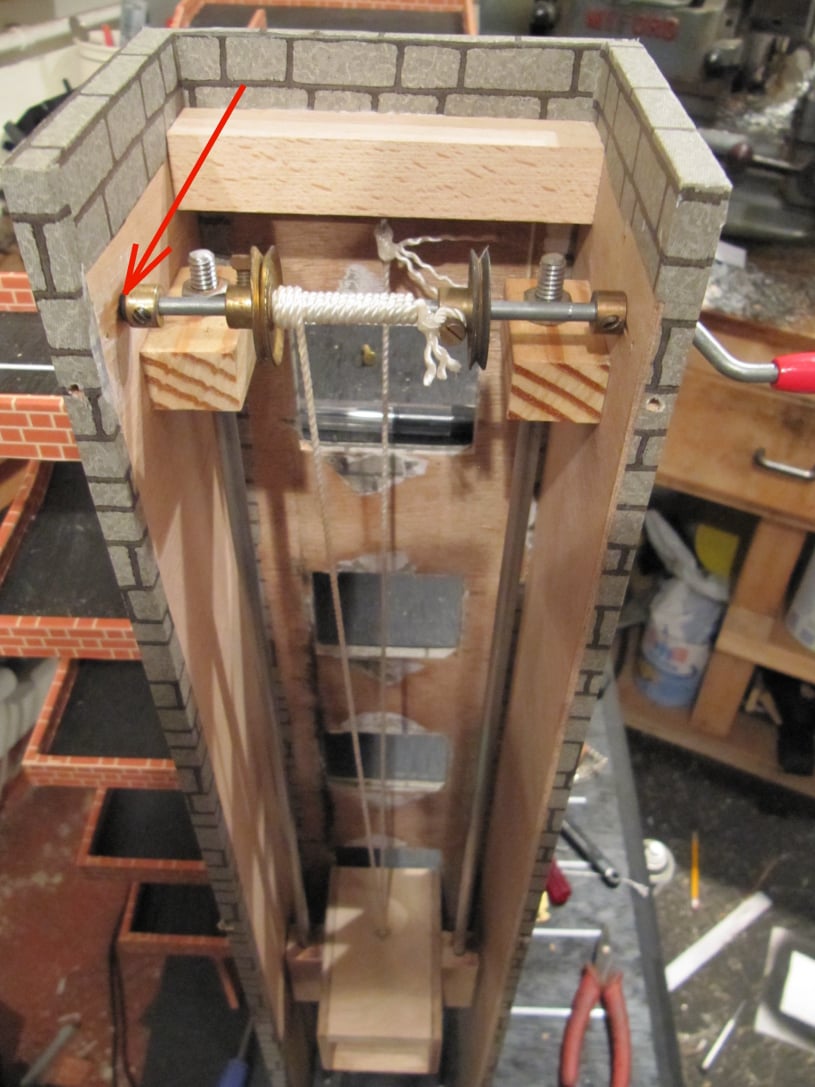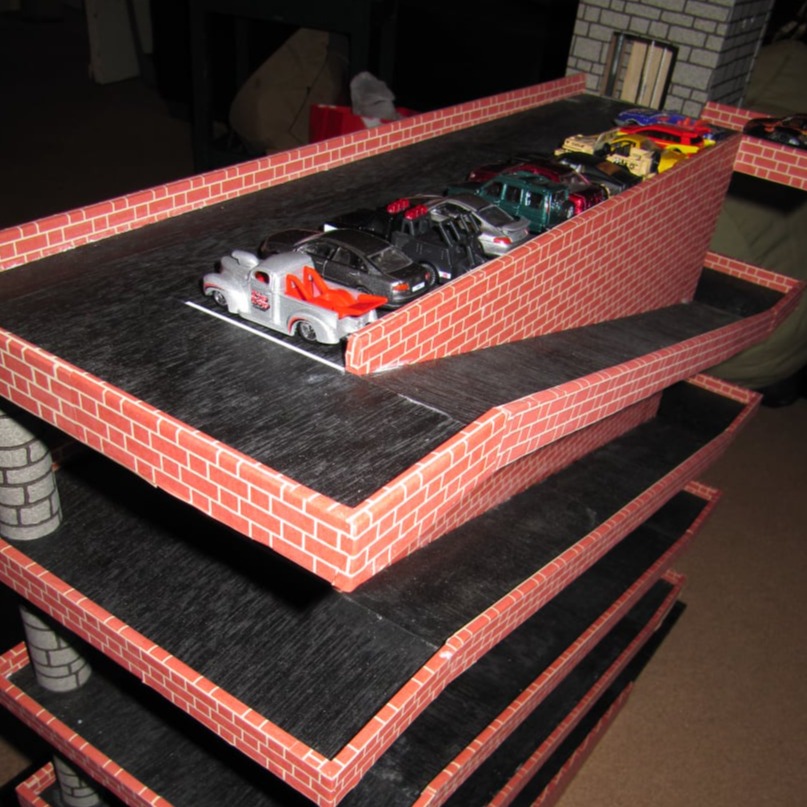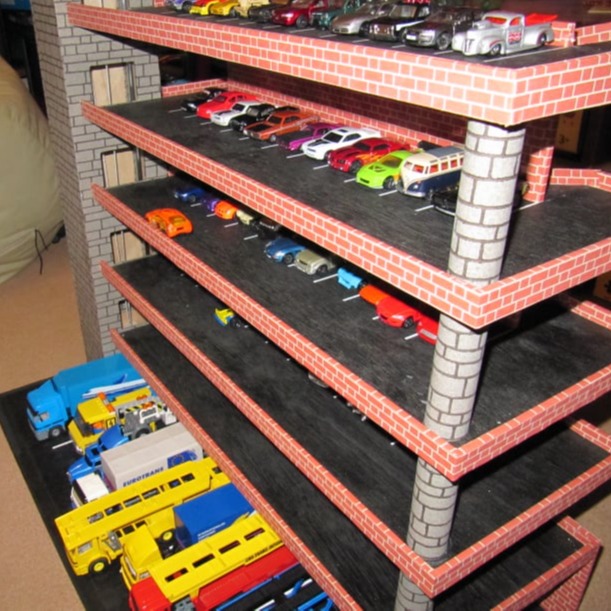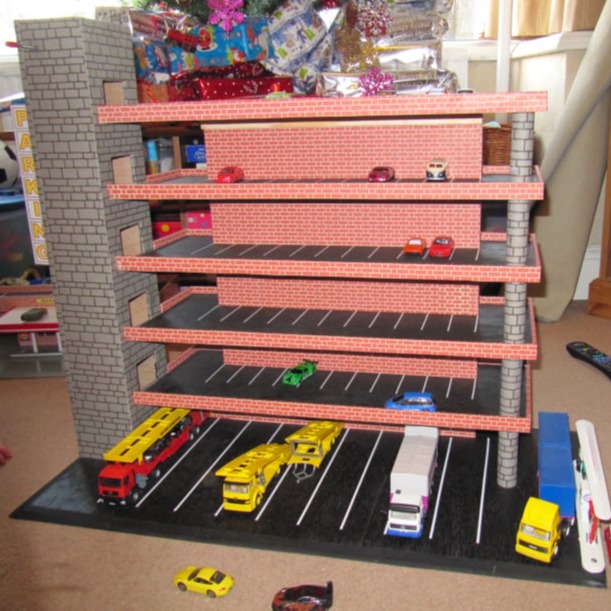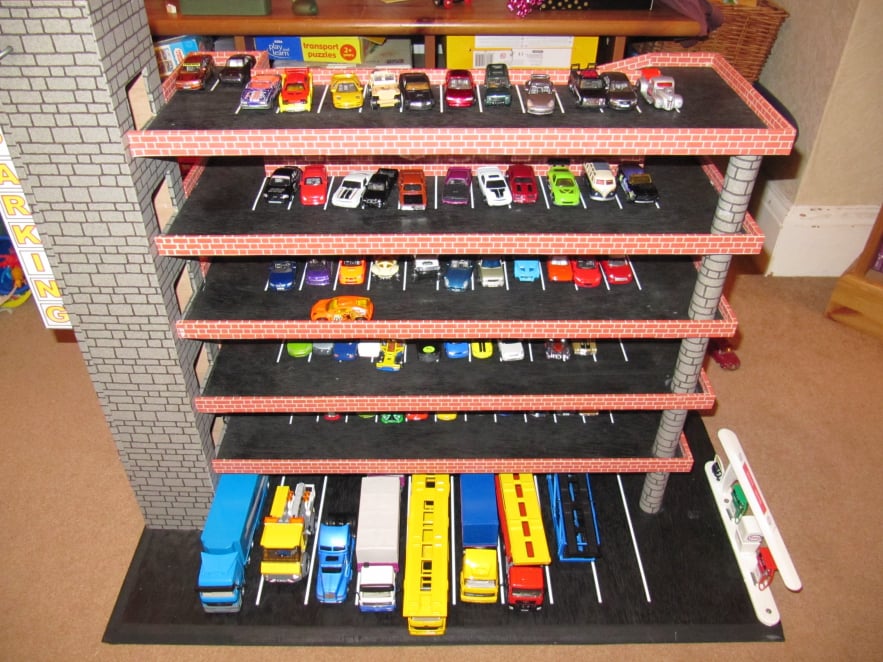
Parking lot. A Multi-Story Carpark
This parking lot was made to accommodate a collection of toy cars.
It comprised of five upper decks for cars and small vans and a larger lower deck for trucks and lorries.
The upper decks were accessed by both a ramps at the rear, and a simple elevator on one side.
A service centre offering fuel, oil and tyres was included on the right hand side of the ground floor.
